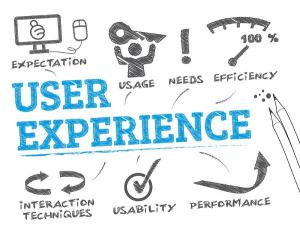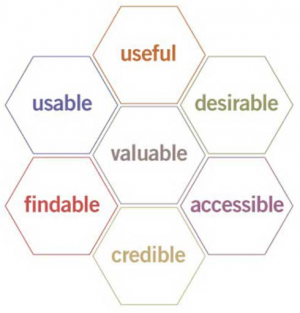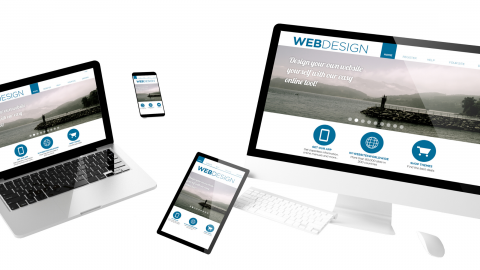
Every firm serious about business has a website by now. It may be of varying degrees of depth and complexity—from a simple landing page or blog to a full-blown eCommerce site—but if the company or organization sincerely expect to leverage the most active marketplace in the world, they have an Internet presence.
But maybe that presence was created a while ago now, or perhaps by people who really weren’t savvy about what really works for what you’re trying to accomplish.
There is a whole palette of tactics to choose from these days. The Web has matured and site-building tools have evolved to allow far more user-friendly interfaces than the original HTML site creators. But if you don’t know how to use those Content Management Systems, or you know the basics but need help with the finer points of structure and functionality, it’s possible that your site isn’t being all it can be in service to your online goals.
It may be time to bring in a consultant that specializes in web development. Or maybe you just need some help understanding one of the key design components that will either make or break your website’s effectiveness as a marketing and/or sales tool: User Experience (UX).

User Experience is important to everyone.
Whether you want to sell a product or service, garner a constant stream of eyes to build your brand, or simply provide a steady stream of information about a specific topic, you still need to make your site easy to use. And if it’s not, all you have to do is check your Google Analytics reports to figure out why. (You are using, analytics, right?)
You may discover that people are coming to your site, but not staying long. Perhaps many of them leave from a certain page repeatedly, and never come back. Or they're visiting your storefront, but not buying.
Whatever the specific reason, it all adds up to the fact that they didn’t have a great experience on your site, so they’re not going to reward you with their time, attention, and dollars. They have plenty of other places to go online—1.72 billion sites, at the time this was written—and they WILL find those that engage, delight, and reward them with an intuitive and pleasant user experience.
Just like the building of your site, building and maintaining an engaging user experience is not a one-time effort. Yes, there will be the major build and launch, but then you can’t just put it on the back burner. Because Web conventions and trends change with available technology, user experience is not a “fix-it-and-forget-it” deal.
So, what does it mean to build and maintain a good one? First, we have to understand the definition of UX.
What does “User Experience” really mean?
User experience is such an important part of a website, that is has its own website at the U.S. Department of Health and Human Services. Usability.gov is the leading resource for UX best practices and guidelines. It serves practitioners and students in the government and private sectors. The site provides overviews of the user-centered design process and various UX disciplines. It also covers related information on methodology and tools for making digital content more usable and useful.
This site defines UX as focusing on “having a deep understanding of users, what they need, what they value, their abilities, and also their limitations. It also takes into account the business goals and objectives of the group managing the project. UX best practices promote improving the quality of the user’s interaction with and perceptions of your product and any related services.”
Peter Morville, an information architecture and findability expert, created the User Experience Honeycomb to represent the desirable qualities in a website:

According to this paradigm, in order for there to be a meaningful and valuable user experience, information on your site must be:
Remember, whenever you publish a site on the World Wide Web, you are making an implicit promise to your visitor: that the time they spend there will be worthwhile. In the big scheme of things, you can theoretically make more of anything except time, so not delivering on that promise is theft of an irreplaceable resource, and once you disappoint a site visitor, they won’t forget that theft.
So you need to deliver a good UX, which means:
- Useful: Your content should be original and fulfill a need.
- Usable: Site must be easy to use.
- Desirable: Image, identity, brand, and other design elements are used to evoke emotion and appreciation.
- Findable: Content needs to be navigable and locatable onsite and offsite.
- Accessible: Content needs to be accessible to people with disabilities.
- Credible: Users must trust and believe what you tell them.
- You somehow attracted a visitor to your site.
- The visitor scrolled through at least more than a few of its pages.
- They understood what your site is about.
- They found something of value there and were satisfied it was worth the time they traded to be there.
Why Concern Yourself With Improving UX?
It’s a simple concept, really: If you keep people happy, they’ll be more responsive to what you wish them to do. So if you make their experience using your site easy, pleasant, maybe even fun, they’ll stay longer. If they stay longer, they’re more likely to develop good feelings toward what you offer, and to take the action you want them to take.
In business, this means visitors converting from prospects to customers. For organizations, it means visitors becoming members or subscribers or volunteers.
There is one simple concept that professional Web developers use to make this happen: They attempt to remove every possible obstacle between the visitor and what they want the visitor to do. This is called “reducing friction,” because friction occurs in physics whenever something exerts unwanted force in the opposite direction from where a body is intended to move.

No One Likes Friction
“Friction” on a website can be caused by a number of things, all of which add up to the total UX. It’s probably easiest to illustrate this point with an example:
Make It Customer-Centric
Now, with all the other things that could put your visitor off, doesn’t it just make sense to make sure the things that are within your control are as bulletproof as possible? And it’s not hard to do: Mostly, it’s just common sense, and it begins with putting yourself into the user’s shoes.
Here are a few examples of things that could end up happening with your design, and could cause a visitor to leave:
- Imagine that someone is surfing the Web, and lands on one of your blog posts. This is their point of entry to your site, one of many ways they might have gotten there.
- Having read your post, they decide that you know what you’re talking about. They want to learn more about how you gained your expertise, so they visit your About page.
- Impressed with your experience, they move through some of your other pages. The topic interests them, so they keep reading.
- At some point, they are presented with a subscription form that offers exclusive content such as a special report or downloadable eBook, in exchange for their email address.
- They sign up and enjoy the content you provided.
- A few days later, you send them an email welcoming them to your community. It contains an offer for an online video course on your topic. There are two possible choices they could make:
- They sign up for the course because they like its description, price, and the time it takes to complete.
- They don't sign up because they don't like one of those things, or because of a UX element that put them off. This could be anything from a disturbing image to an arrogant quote from you, or any number of other things.
- Visitor arrives, and is immediately bombarded by a bunch of flashing, blinking eye candy that serves to confuse and disorient, rather than attract and help. Yiy! Nope!
- There is no strong branding, headlines or copy to let the visitor know what the site is about. Buh-bye.
- :: Visitor clicks a button :: “Wait, that's not a button. It looks like a button. I don’t get this site.” Poof!
- (Here’s a pet peeve of mine): “I’m not quite sure about something on this site, but I’m interested enough in what it offers to make a little effort. I’ll just contact the site owner. But where the heck is the contact info?” :: disgusted sigh :: I’m outta here.
This is exactly the opposite of a good customer experience, so there’s a very good chance that not only will that user never become a customer, they may disparage your site to friends and colleagues. You’ve now caused damage where your job was to create goodwill.

Test, Test, Test!
To make sure that never happens, you MUST design around the user. To be sure that’s what’s actually happening and not just what you think is happening, at all points along the process—from wireframing to final launch—you need to test, test, test.
Lots of things work on paper or in theory, but once put into actual practice, unforeseen problems can arise. And the only way you can do that is to try it out as you build it. Testing should just come at the end, but all along the way, so that when a problem does arise, you can nip it in the bud, before it begets a bunch more issues.
In our next post, we’ll explore more about the actual UX design process, and some proven tactics to avoid the potential minefield of poor UX.




















